Welcome to our guide on crafting an effective vendor performance review feedback letter! In today's fast-paced business environment, clear communication with vendors is essential for fostering strong partnerships and ensuring mutual success. This article will provide you with a simple template and helpful tips to create feedback that is constructive, respectful, and actionable. Ready to enhance your vendor relationships? Let's dive in!
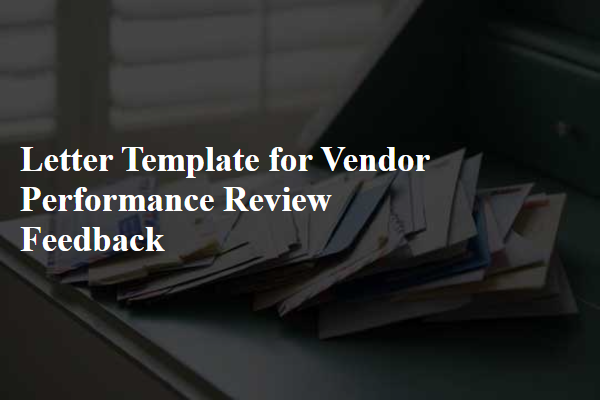
Clear performance metrics and evaluation criteria
During our vendor performance review, we identified several clear performance metrics that are crucial for evaluating our suppliers. Key performance indicators (KPIs) include on-time delivery rates, measured as a percentage of orders received within the agreed timeframe, which should ideally exceed 95%, product quality assessments derived from defect rates, aiming for less than 1% return on faulty goods, and communication effectiveness, gauged through response times to inquiries, targeting responses within 24 hours. Additionally, customer satisfaction scores collected via surveys after transactions provide vital insights, where a score above 8 out of 10 is considered satisfactory. Overall performance aligns with our corporate goals and the expectations set in our vendor agreements. Regular assessments every quarter help maintain our standards and foster continuous improvement between our organization and suppliers.
Constructive feedback and improvement areas
Vendor performance reviews often reveal critical insights regarding service delivery and product quality. One area of concern could be timely deliveries, particularly if the vendor consistently fails to meet deadlines by more than three business days, affecting project timelines. Communication during these instances is equally crucial; inadequate updates can hinder collaboration and create misunderstandings. Additionally, product quality control is pivotal; defects in delivered items beyond the acceptable threshold of 2% can impact end-user satisfaction. Another relevant improvement area is responsiveness to inquiries; prolonged response times, exceeding 48 hours, can disrupt the workflow and often lead to missed opportunities. Establishing clear and actionable improvement metrics could foster enhanced performance relations.
Acknowledgment of achievements and strengths
The vendor performance review highlights significant achievements and strengths demonstrated by the supplier throughout the engagement. Consistent on-time delivery rates, averaging 98% over the past year, showcase reliable logistics and supply chain management. Quality assurance metrics indicate a defect rate of less than 1%, reflecting an impressive commitment to excellence in product standards. Customer service responsiveness is noteworthy, with an average response time of under two hours on support inquiries, indicating a high level of dedication to client satisfaction. Additionally, innovative solutions implemented for inventory management have resulted in a 15% reduction in lead times, enhancing overall operational efficiency. The vendor's proactive approach to communication and collaboration further solidifies a strong partnership foundation.
Specific examples to support feedback
Vendor performance reviews are critical for maintaining successful business relationships and ensuring the achievement of organizational goals. Effective communication involves providing specific examples that highlight strengths and areas for improvement. For instance, timely delivery of products, such as the shipment of 500 units of office supplies on March 10, 2023, demonstrates reliability. Conversely, an instance of delayed service occurred on January 15, 2023, when a scheduled maintenance visit for machinery at the manufacturing plant was postponed, leading to a production halt. Furthermore, the quality of materials, such as the failure rate of 2% in the last shipment of electronic components, reflects the vendor's commitment to standards. Continuous improvement initiatives, like participation in quarterly performance meetings, are essential for evolving the partnership and addressing any emerging issues effectively.
Future expectations and action plans
For the upcoming assessment of vendor performance, it is crucial to outline specific expectations for future collaboration and detailed action plans. Key performance indicators (KPIs) such as on-time delivery rates (targeting 95% adherence), product quality metrics (aiming for a maximum defect rate of 1%), and customer service response times (looking for responses within 24 hours) will be emphasized. The action plan includes regular monthly review meetings to ensure alignment, implementation of a feedback loop from stakeholders to address any service gaps, and training sessions focusing on areas like supply chain efficiency and communication protocols. These strategies will aim to foster a more effective partnership, enhance overall service delivery, and ultimately achieve mutual objectives.

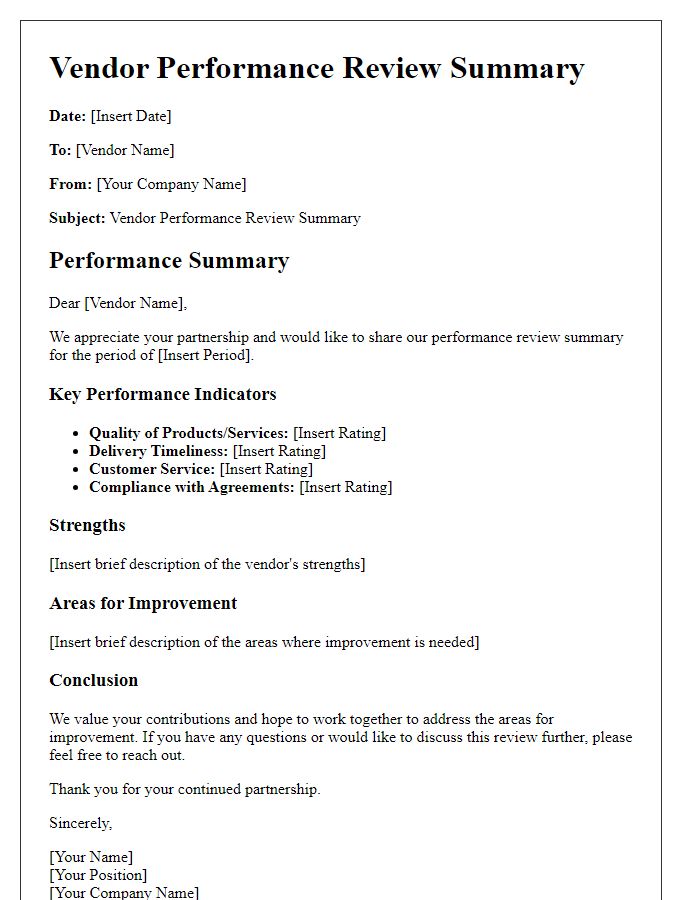
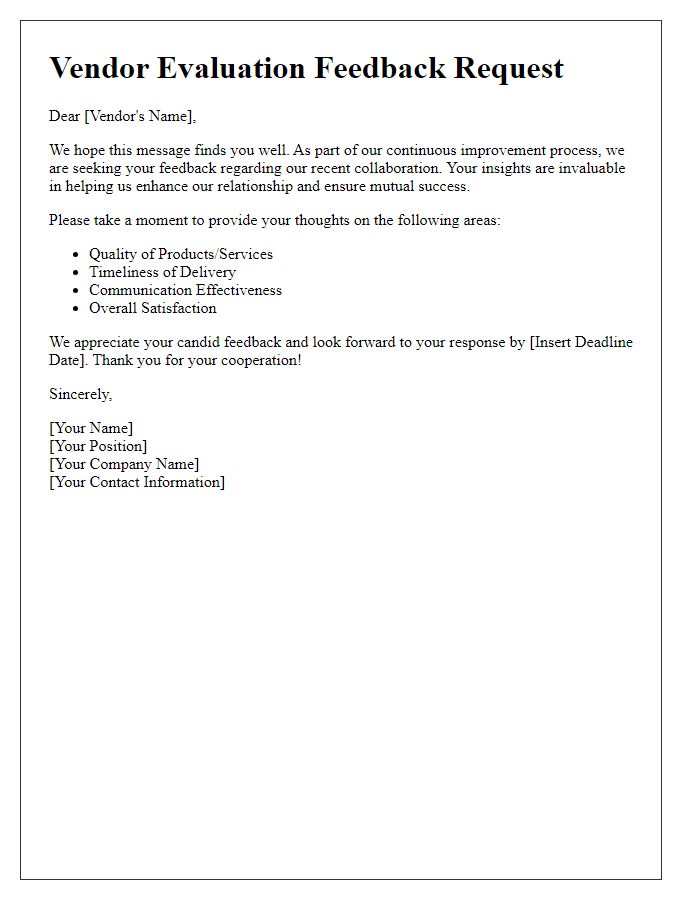
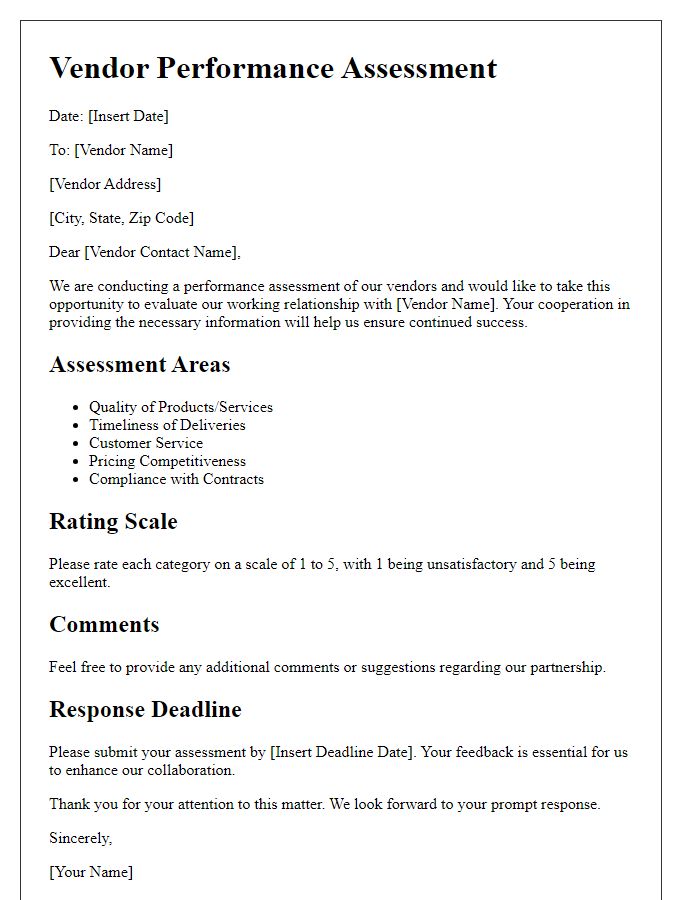
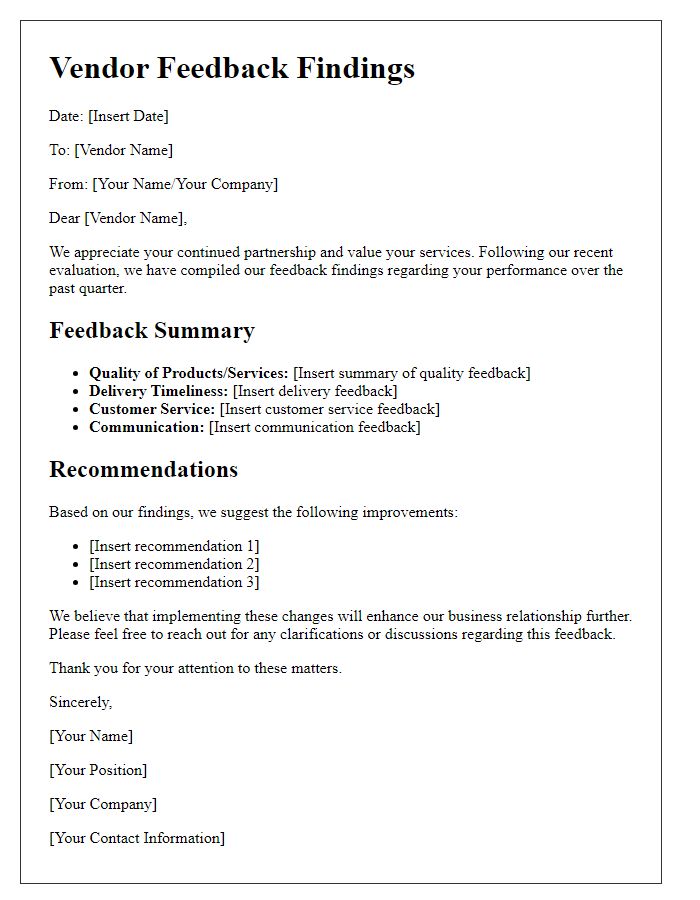
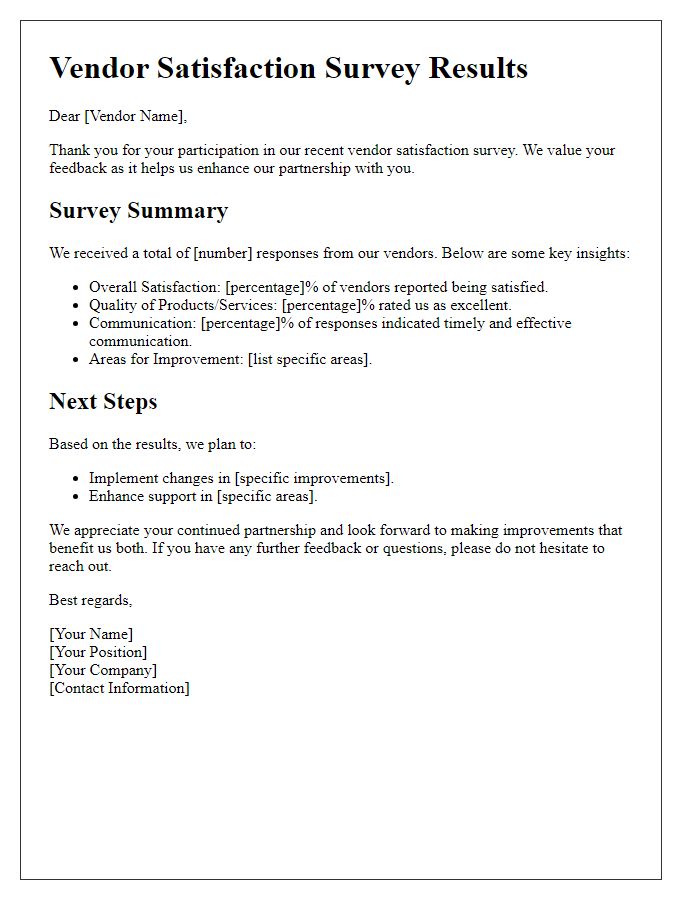
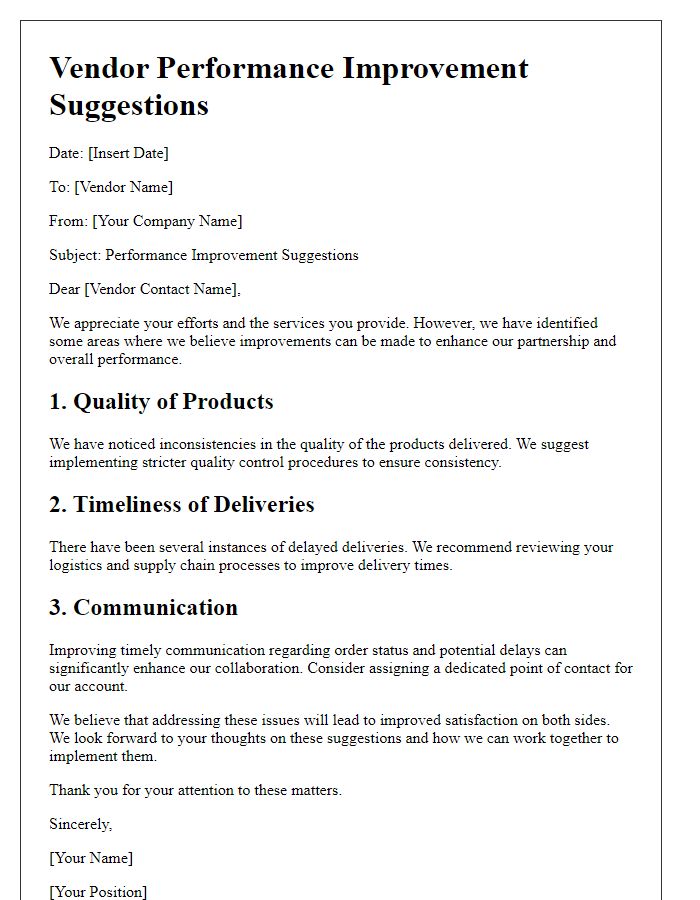
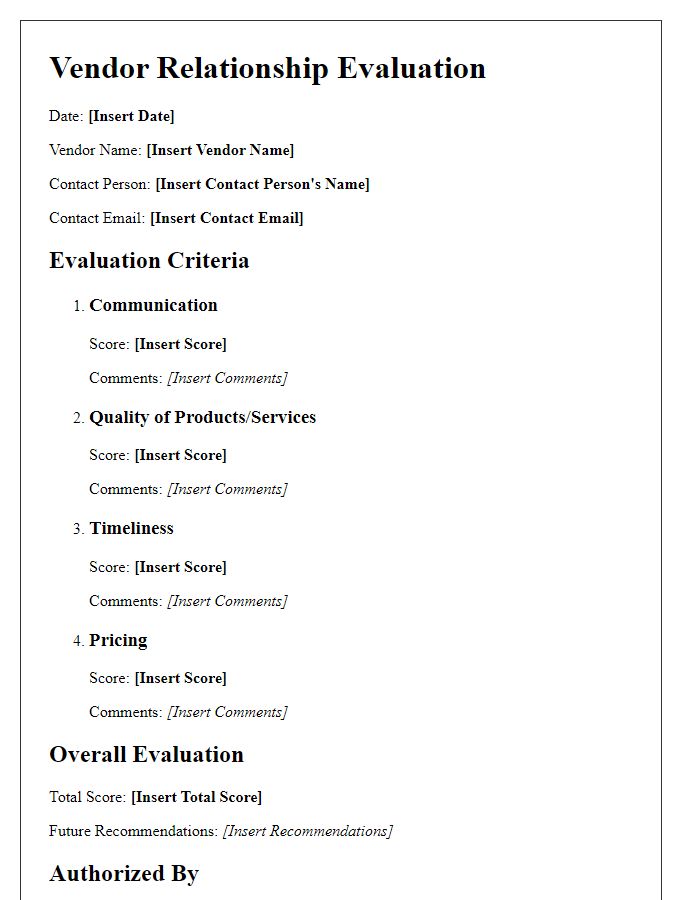
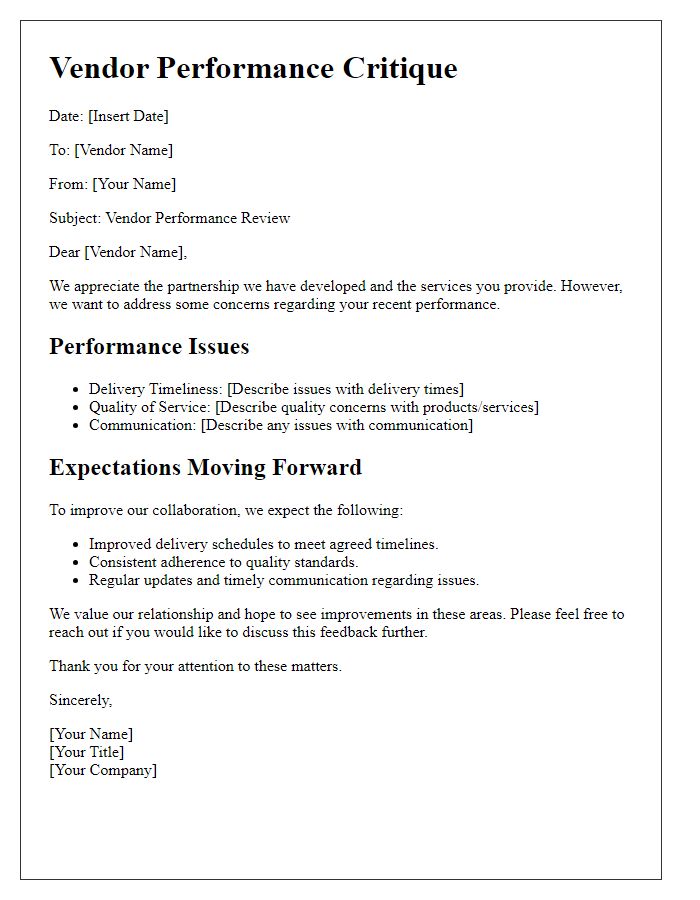

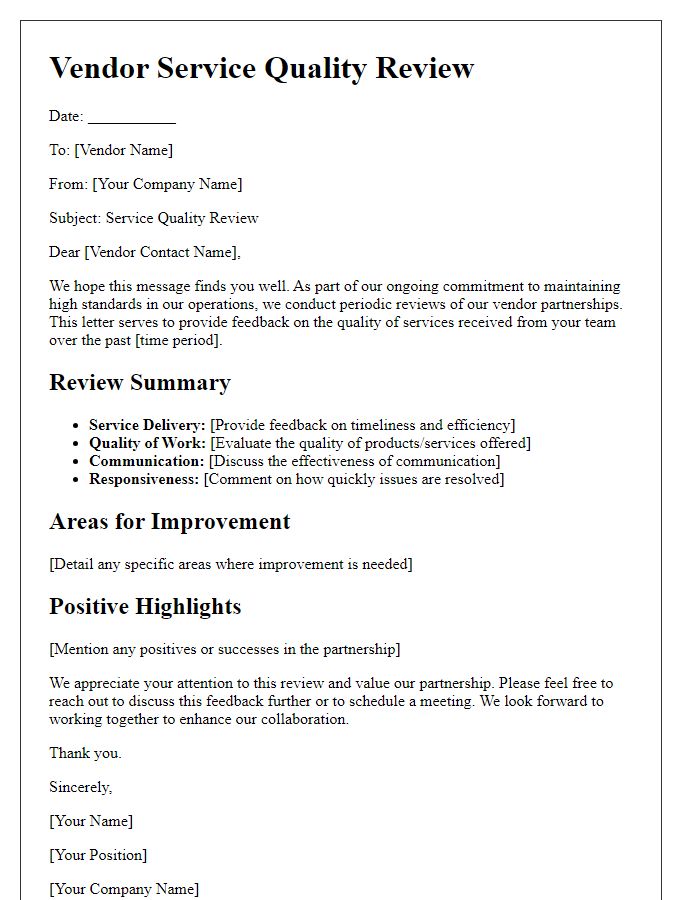


Comments